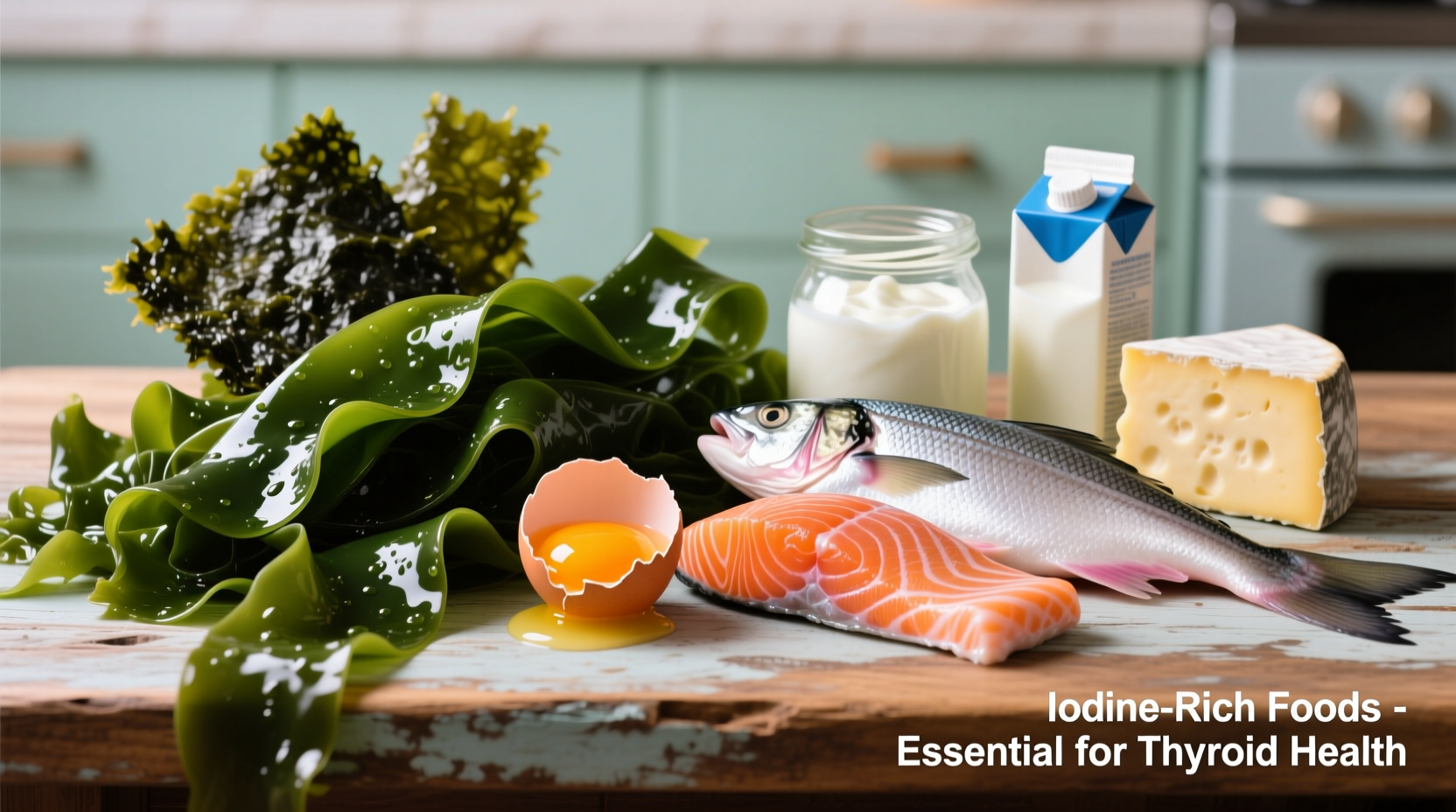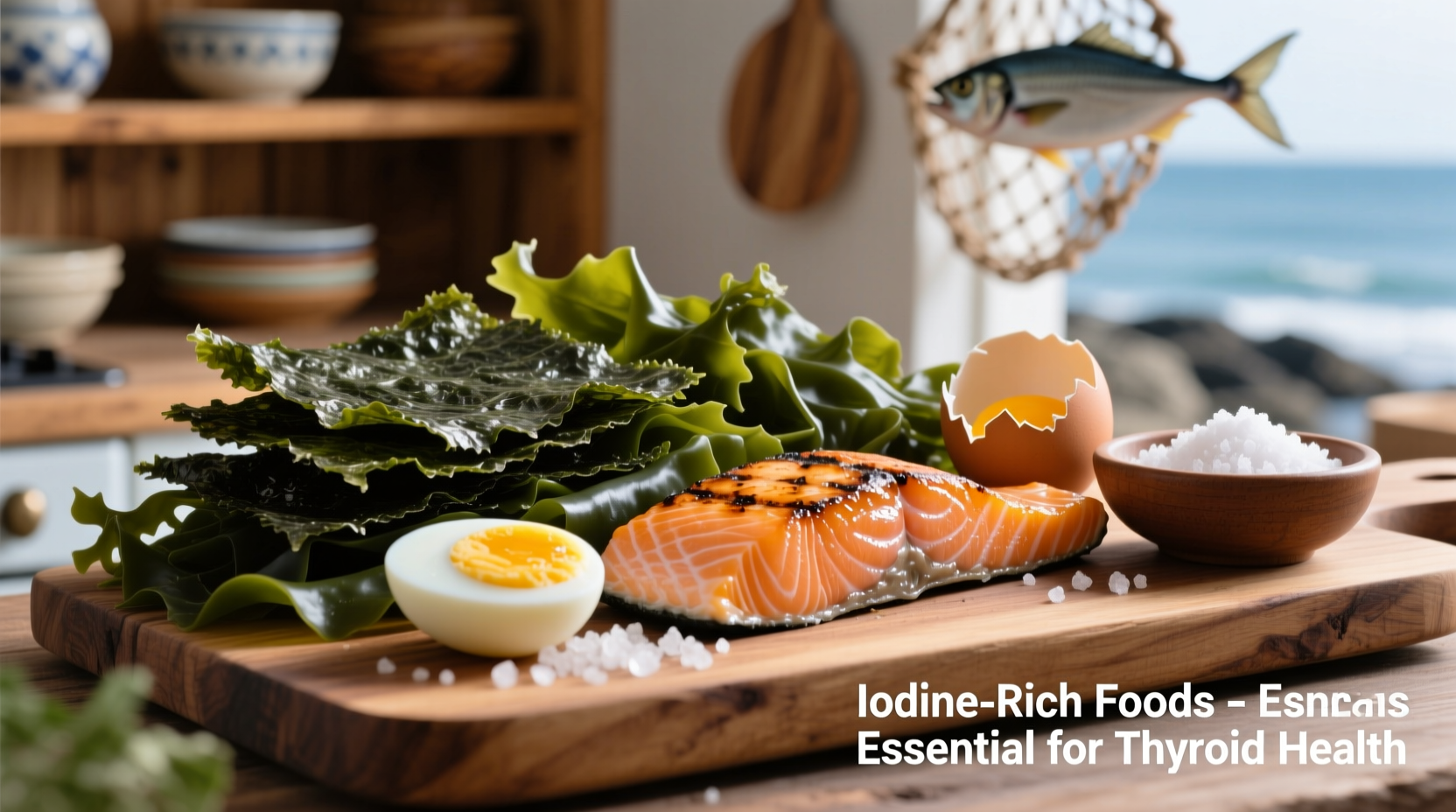Discover exactly which foods contain iodine, how much you need, and practical ways to incorporate these nutrient-rich options into your daily meals. This guide cuts through the confusion with science-backed information to help you maintain optimal thyroid health through your diet.
Why Iodine Matters for Your Health
Iodine serves as the essential building block for thyroid hormones that regulate metabolism, growth, and development. Without adequate iodine intake, your body can't produce sufficient thyroid hormones, potentially leading to fatigue, weight gain, and cognitive difficulties. The National Institutes of Health recommends 150 micrograms (mcg) of iodine daily for most adults, with increased needs during pregnancy (220 mcg) and lactation (290 mcg).
Top Iodine-Rich Foods by Category
Seafood: Nature's Most Concentrated Source
Marine environments concentrate iodine from seawater, making seafood exceptionally rich in this vital nutrient. Cold-water fish and shellfish typically contain higher levels than freshwater varieties.
| Food (serving size) | Iodine Content (mcg) | % Daily Value |
|---|---|---|
| Roasted seaweed (1 sheet) | 16-2,984 | 11-1,989% |
| Cod (3 oz, cooked) | 99 | 66% |
| Shrimp (3 oz, cooked) | 35 | 23% |
| Tuna (3 oz, canned) | 17 | 11% |
| Scallops (3 oz, cooked) | 14 | 9% |
Source: USDA FoodData Central, National Institutes of Health Office of Dietary Supplements
Seaweed varieties show remarkable variation in iodine content. Kelp contains exceptionally high levels (up to 2,984 mcg per gram), while nori used in sushi rolls provides more moderate amounts (16-43 mcg per gram). This natural variability explains why some seaweed supplements can deliver excessive iodine.
Dairy Products: Consistent Iodine Delivery
Dairy products consistently rank among the top dietary sources of iodine in Western diets. The iodine content primarily comes from cattle feed supplements and iodine-based disinfectants used in milking equipment. A single cup of milk typically provides 50-100 mcg of iodine, contributing significantly to daily requirements.

Eggs: The Complete Package
One large egg contains approximately 24 mcg of iodine, primarily concentrated in the yolk. The iodine content can vary based on chicken feed composition. Pasture-raised eggs often contain higher levels due to more diverse foraging opportunities.
Iodized Salt: The Public Health Solution
Since the 1920s, iodized salt has successfully prevented widespread iodine deficiency disorders. Just 1/4 teaspoon of iodized table salt provides about 71 mcg of iodine. However, specialty salts like sea salt, Himalayan pink salt, and kosher salt typically contain little to no iodine unless specifically fortified.
Context Boundaries: When Iodine Needs Change
Your iodine requirements aren't static—they shift based on life circumstances and health conditions:
- Pregnancy and lactation: Requirements increase by 50% to support fetal and infant brain development
- Thyroid conditions: Those with autoimmune thyroid disease may need to carefully monitor iodine intake
- Dietary restrictions: Vegans and those avoiding dairy/seafood face higher risk of deficiency
- Geographic location: Soil iodine content varies dramatically by region, affecting local food supply
The American Thyroid Association emphasizes that excessive iodine intake (above 1,100 mcg daily) can trigger thyroid dysfunction in susceptible individuals, creating a delicate balance between deficiency and excess.
Evolution of Iodine in Our Food Supply
Iodine deficiency was once widespread in certain regions until public health interventions changed our food landscape:
- 1920s: Iodine fortification of salt begins in Switzerland and the U.S. Great Lakes region
- 1930s-1940s: Iodized salt programs expand globally, virtually eliminating goiter in developed nations
- 1970s: Dairy industry shifts from iodine-based sanitizers to alternatives, reducing iodine in milk
- 2000s: Rising popularity of non-iodized specialty salts and plant-based milks creates new deficiency risks
- Present: Approximately 2 billion people worldwide still face iodine deficiency risks according to WHO data
Practical Strategies for Optimizing Iodine Intake
Building iodine-rich meals doesn't require drastic changes to your eating habits:
- Add seaweed to soups, salads, or as a snack (start with small amounts due to high concentration)
- Choose iodized salt for cooking when appropriate for your health
- Include at least two seafood meals weekly using iodine-rich fish like cod or haddock
- Consume dairy products regularly if tolerated—Greek yogurt makes an excellent iodine-rich breakfast
- For plant-based diets, combine moderate seaweed intake with iodized salt
Common Misconceptions About Dietary Iodine
Several myths persist about iodine sources that can lead to confusion:
- Myth: All salt contains significant iodine
Reality: Only iodized table salt is fortified—most specialty salts contain negligible amounts - Myth: Sea salt naturally contains iodine
Reality: Sea salt contains minimal iodine unless specifically fortified - Myth: Plant foods provide reliable iodine
Reality: Soil iodine varies dramatically—plant sources are inconsistent except for seaweed - Myth: More iodine is always better
Reality: Both deficiency and excess can harm thyroid function
When to Consider Testing Your Iodine Status
While most people can maintain adequate iodine through diet, certain symptoms may warrant discussion with your healthcare provider:
- Persistent fatigue despite adequate sleep
- Unexplained weight gain
- Dry skin and hair
- Cognitive difficulties or brain fog
- Feeling unusually cold
Remember that these symptoms overlap with many other conditions, so professional evaluation is essential before making dietary changes.











 浙公网安备
33010002000092号
浙公网安备
33010002000092号 浙B2-20120091-4
浙B2-20120091-4